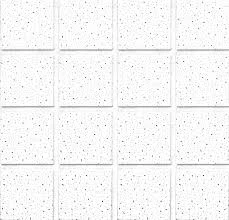- Afrikaans
- Albanian
- Amharic
- Arabic
- Armenian
- Azerbaijani
- Basque
- Belarusian
- Bengali
- Bosnian
- Bulgarian
- Catalan
- Cebuano
- Corsican
- Croatian
- Czech
- Danish
- Dutch
- English
- Esperanto
- Estonian
- French
- German
- Greek
- Hindi
- Indonesian
- irish
- Italian
- Japanese
- Korean
- Lao
- Malay
- Myanmar
- Norwegian
- Norwegian
- Polish
- Portuguese
- Romanian
- Russian
- Serbian
- Spanish
- Swedish
- Thai
- Turkish
- Ukrainian
- Uzbek
- Vietnamese
نوفمبر . 17, 2024 03:41 Back to list
t bar grid
Understanding the T- Bar Grid A Comprehensive Overview
The T-bar grid ceiling system has become a cornerstone in modern architectural design and construction, providing a blend of aesthetic value and functional prowess. As an integral component of suspended ceiling systems, the T-bar grid plays a crucial role in both commercial and residential spaces, enhancing the versatility and functionality of indoor environments.
What is a T-Bar Grid?
A T-bar grid comprises a network of metal channels designed to support ceiling tiles. These channels form a grid-like framework, typically consisting of main runners, cross tees, and perimeter trim. The main runners are long, straight sections, while the cross tees connect to create a series of squares or rectangles, providing a framework for inserting ceiling tiles or panels.
Benefits of T-Bar Grid Ceilings
1. Ease of Installation One of the primary advantages of T-bar grid systems is their straightforward installation process. The grid can be suspended from the existing ceiling by using a series of wires, allowing for quick setup and minimal disruption during construction or renovation.
2. Accessibility T-bar grids allow for easy access to electrical wiring, plumbing, and HVAC systems. This accessibility is invaluable for routine maintenance, as ceiling tiles can be effortlessly lifted or removed, facilitating an efficient workflow for building managers and maintenance teams.
3. Aesthetic Versatility Available in various finishes and colors, T-bar grid ceilings can be tailored to fit the design needs of any space. Whether aiming for a sleek, modern look or a classic finish, the versatility of T-bar grids enables architects and designers to create visually appealing interiors.
t bar grid

4. Sound Absorption Many ceiling tiles used with T-bar grid systems are designed to absorb sound, contributing to a quieter and more comfortable indoor atmosphere. This feature is particularly beneficial in environments such as offices, schools, and healthcare facilities, where noise reduction is paramount.
5. Fire Resistance With a variety of materials available, T-bar grid ceilings can enhance a building's fire safety. Fire-rated ceiling tiles can be integrated into the grid, complying with local codes and providing peace of mind to building occupants and owners.
Applications of T-Bar Grids
T-bar grids are predominantly used in commercial settings such as offices, retail spaces, and educational institutions. Their adaptability allows for the integration of various architectural elements, such as lighting fixtures, air diffusers, and acoustic panels. Additionally, T-bar grid systems can be found in residential settings, particularly in basements and utility rooms, where practical and aesthetic considerations intersect.
Installation Tips
When intending to install a T-bar grid ceiling, proper planning and measurement are key. Begin by determining the desired height and layout, taking into account any obstructions such as lighting fixtures or ceiling fans. Utilize a level to ensure that the main runners are aligned correctly, as a flat surface is essential for the overall appearance of the ceiling. It is also vital to secure all connections tightly to maintain stability and support the weight of the ceiling tiles.
Conclusion
The T-bar grid ceiling system is a highly efficient, versatile, and aesthetic solution for a wide range of building projects. When considering the benefits it offers in terms of installation ease, accessibility, sound absorption, and fire safety, it is evident why architects and builders have adopted this technology as a standard in modern construction. Whether in a sleek office space or a cozy home, T-bar grids help create functional and beautiful environments that cater to today’s design trends and practical needs.
-
Transform Interiors with PVC Gypsum Ceiling: A Stylish, Durable, and Moisture-Resistant SolutionNewsMay.19,2025
-
The Smart Interior Upgrade: Discover the Durability and Versatility of Gypsum Ceiling Access Panel SolutionsNewsMay.19,2025
-
The Smart Choice for Interior Design: Discover the Value of PVC Gypsum Ceiling SolutionsNewsMay.19,2025
-
Mineral Fiber Ceiling Tiles: The Smart Blend of Performance and AestheticsNewsMay.19,2025
-
Mineral Fiber Ceiling Tiles: The Superior Choice Over Gypsum for Sound and Fire SafetyNewsMay.19,2025
-
Mineral Fiber Ceiling Tiles: Eco-Friendly Strength and Style for Every CeilingNewsMay.19,2025







